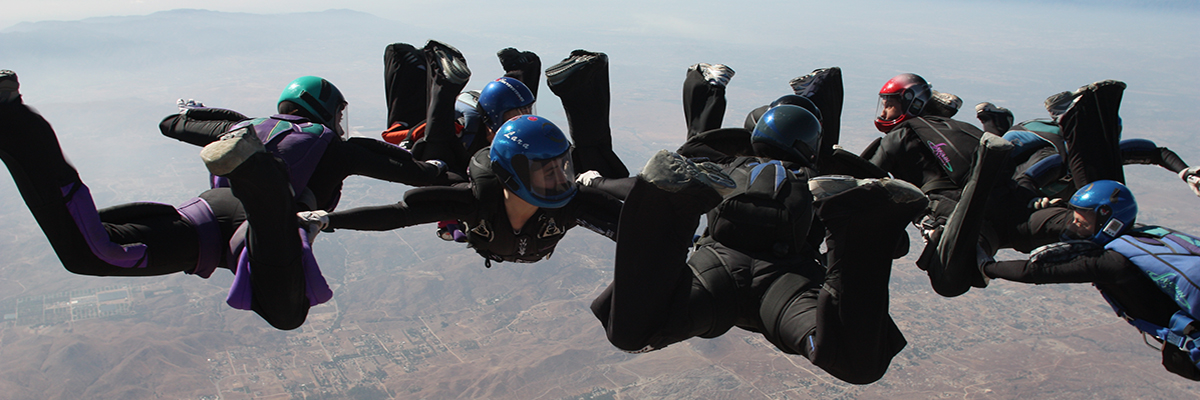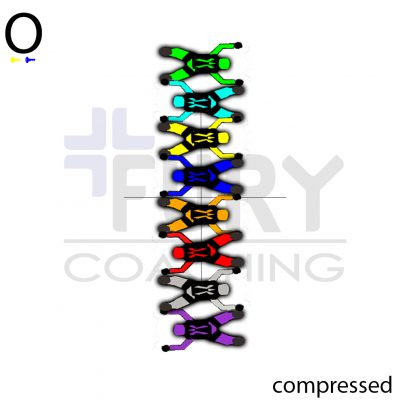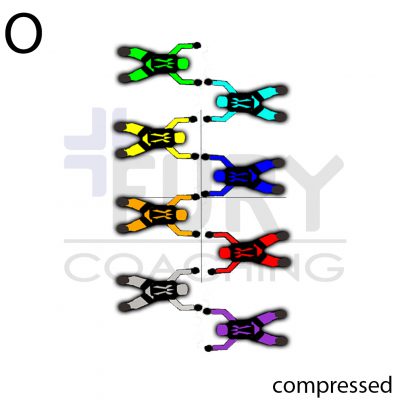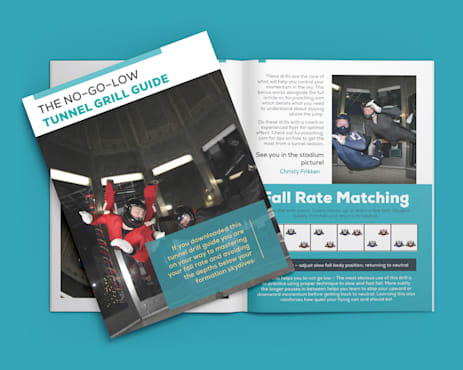8-way Basics: Fall Rate
Thursday, August 8, 2019

It doesn’t matter how in place your turn is if you aren’t on level! In a wind tunnel, you can watch a less experienced team yo-yo up and down as they build and release various formations. It makes it easier to recognize and correct for fall rate issues. How can you keep it consistent in the sky?
This is a short series of articles that will help you break down and understand how 8-ways are built. While focusing on the formations in the competition pool, the tools shown here are highly transferable to general formation skydiving.
8-way Basics: Finding your slot
8-way Basics: Finding your clone
8-way Basics: Finding the centers
8-way Basics: Build the center first
8-way Basics: In-facing strategy
8-way Basics: Staged setups
8-way Basics: Round formations
8-way Basics: Fall rate
8-way Basics: Shared keying
8-way Basics: Line between point and tail
8-way Basics: Block inters
Oh No… Suddenly Slow!
As formations build, they may tend to slow down making it more difficult for the folks on the outside of the formation to complete their docks. (Of course, if they are waiting in-faced patiently for the center to build and the appropriate stage to arrive, they will still be ready to rock!) The Inside Center and Outside Center must set a smooth and consistent fall rate even as these formations start to build.
Of course some formations are floatier than others. Shapes that are composed of Cats, Sidebodies, and Compressed are notorious floaters.
This happens because as a skydiver takes this type of grip, they are extending extra surface area. If they simply relax, they will not compensate for the subtle decrease in the fall rate. This compounds and the whole point will slow down. If the Centers identify these formations on the ground beforehand, they can counteract the effect by arching more as the formation builds.
Smooth and Easy Adjustments
Great centers set fall rate changes smoothly. A common mistake is attempting to adjust the fall rate quickly in the middle of a formation. Imagine you are in the center of an eight-way and you see the Point is starting to struggle and go low. Your reaction to pick up the fall rate is a great one! But if you just hammer out your best arch the rest of the team will have difficulty reacting in time. This causes levels within the formation, which can cause sliding and rotation or even a mid-air funnel.
A better option is to see the fall rate needs increasing, and start adjusting slowly, paying attention to your clone and other teammates. After the small adjustment is made, adjust the speed until it becomes clear that the team is maxed out together.
O… A Giant Compressed

Our specific formation to highlight this principle is the Compressed Accordion (O). This formation is comprised only of compressed accordion grips, so we can expect it may slow down as it builds. As this formation builds from the center to the outsides, the Inside Center and Outside Center can smoothly keep the fall rate up. As new people attach they must match this speed, arching as they pick up grips.

A consistent falling formation makes it easier for the outsides to predict and match. Gripping slows things down, but you can learn to compensate for the floatiness. Centers can smoothly change the fall rate to lead the team to success!
Tags: 8way



